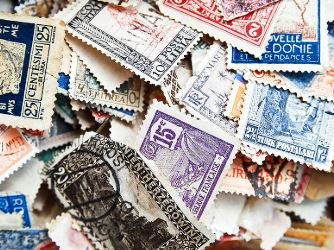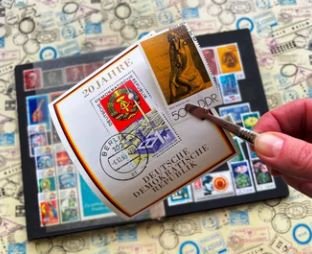Introduction to Philatelic Wonders
Stamps, often viewed just as mailing tools, are profound historical treasures and collectible items. These tiny paper pieces capture cultural messages and commemorate significant global events and figures, elevating their status beyond mere postal utilities.
Stamps are not just simple postal items; they are collectible treasures that can hold significant value. Among these, certain rare stamps have become highly sought after by collectors and investors alike. The allure of these small pieces of paper lies in their history, artistry, and the stories they tell.
Rare and valuable stamps hold a unique allure for collectors and enthusiasts around the world. These tiny pieces of paper not only represent a method of communication but also encapsulate rich histories, artistic designs, and significant cultural moments. The fascination with rare and valuable stamps often stems from their limited availability, intriguing stories, and the thrill of the hunt involved in acquiring them.

Intriguing Mistakes: The Inverted Jenny
The Inverted Jenny is perhaps one of the most iconic American philately stamps, celebrated for its striking error. Issued in 1918, it features a biplane mistakenly printed upside down. This printing mishap occurred during a routine production process, but rather than being caught and corrected before release, a limited number of these stamps made it into circulation. As a result, the Inverted Jenny has become a symbol of rarity and intrigue among collectors.
Such errors in stamp production, typically resolved before reaching the public, can significantly enhance a stamp’s allure and market value. The Inverted Jenny, in particular, has fetched staggering sums at auctions, with individual stamps selling for millions of dollars. Its unique story and the rarity of the error make it not just a collectible item but a cherished piece of American history, capturing the fascination of both philatelists and casual observers alike.
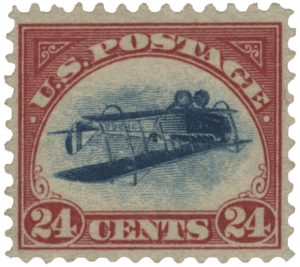
Rare and valuable stamps
Factors of Rarity and Value
Rare and valuable stamps achieve their status through factors such as production errors, limited printing runs, and significant historical ties. For instance, the British Guiana 1c magenta stands as the epitome of rarity and value among rare and valuable stamps, celebrated as the costliest stamp in the world due to its unique existence and profound historical significance. These elements not only contribute to the allure of rare and valuable stamps but also make them highly sought after by collectors eager to own a piece of history.
Factors Influencing Value
The value of stamps can fluctuate based on various factors, including rarity, condition, and demand. A stamp that was produced in limited quantities or has unique printing errors can fetch astronomical prices at auctions. For instance, the “Inverted Jenny,” an American stamp featuring a plane printed upside down, is one of the most famous philatelic errors, commanding millions in sales due to its scarcity and intrigue.
The Zeppelin Stamps: A Sky-High Rarity
Zeppelin stamps hold a unique place in the world of rare and valuable philately, celebrated for their connection to the early days of air travel. Issued during the 1930s, these stamps were created to commemorate transatlantic flights conducted by German airships.
The most famous among them, the 1930 Graf Zeppelin stamp, features an image of the airship soaring above a globe. What makes these stamps particularly desirable is their limited production and the historical significance they embody, marking a pioneering era in aviation. Collectors are drawn not only to their aesthetic appeal but also to the stories they represent—an era of innovation and adventure. Due to their scarcity and the fascination surrounding airship travel, Zeppelin stamps can command impressive prices at auctions, making them highly coveted items for both collectors and investors. Their rarity and historical context ensure that they remain treasures in the world of stamp collecting.
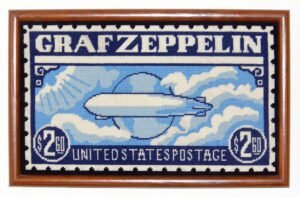
Stamps as Investments
Stamp collecting, also known as philately, has evolved into a significant investment opportunity. Collectors often seek stamps that not only fulfill their passion for history and art but also promise appreciation in value over time. The market for rare stamps can be competitive, with knowledgeable collectors willing to pay top dollar for the right piece.
Beyond the realm of hobbyists, rare stamps attract investors as alternative assets. Their tangible nature and artistic and historical relevance present a unique investment opportunity in an increasingly digital world.
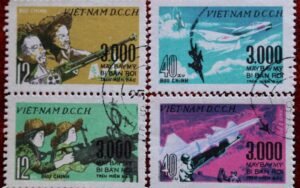
The most valuable U.S. Stamps
The most valuable U.S. stamps not only captivate collectors but also represent significant milestones in American history. Among these, the most valuable U.S. stamp is the 1918 “Inverted Jenny,” renowned for its rare printing error that features an upside-down airplane.
This stamp has become a symbol of rarity and intrigue, drawing attention from philatelists around the globe. Additionally, the most valuable U.S. stamps include the early issues like the 1847 5-cent Benjamin Franklin and 10-cent George Washington stamps, which are cherished for their historical significance and limited quantities. The most valuable U.S. stamps are more than just collectibles; they embody stories of innovation, artistry, and the unexpected twists of history, making them invaluable treasures for both collectors and historians alike.
The allure of rare U.S. stamps lies not only in their scarcity but also in the stories they tell about American history and innovation. As collectors seek to complete their collections, the hunt for rare U.S. stamps continues to inspire passion and dedication, making these small pieces of paper some of the most valued treasures in the world of collecting.

Preservation and Care
For collectors, proper preservation is crucial to maintaining the value of their stamps. This involves careful handling, storage in climate-controlled environments, and using archival materials to prevent deterioration. Collectors are often advised to consult experts when assessing the condition and potential value of their collections.
How to value old stamps
Valuing old stamps requires a careful assessment of several key factors that contribute to their worth. First, understanding how to value old stamps involves examining their condition, as stamps in mint condition are typically worth more than those with visible wear or damage. Additionally, rarity plays a crucial role in how to value old stamps; limited print runs or printing errors can significantly increase a stamp’s market value. Researching historical significance is also important when determining how to value old stamps, as stamps that commemorate important events or figures often carry a premium.
Finally, consulting pricing guides or professional appraisers can provide valuable insights into how to value old stamps accurately. By considering these aspects, collectors can make informed decisions about their stamp collections and better understand the market for old stamps.
Conclusion: Beyond Collectability
Ultimately, rare and valuable stamps are much more than collectibles. They symbolize timeless stories and historical significance, continuing to captivate collectors and investors with their unique tales and cherished places in history.
Rare and valuable stamps represent a unique intersection of history, art, and investment potential. These small pieces of paper tell stories of the past and continue to capture the imaginations of collectors worldwide. Whether for personal enjoyment or financial gain, the world of philately offers a rich tapestry of treasures waiting to be discovered.
If you want to read about stamp identification and valuation so click here.


